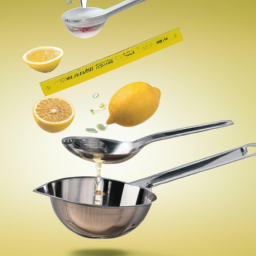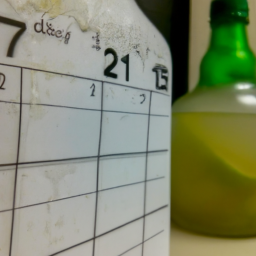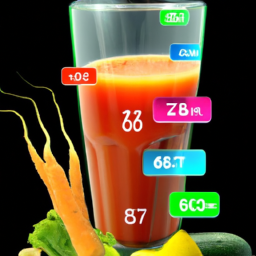As someone who regularly drinks prune juice for its health benefits, I often think about how long it stays in the body. Does it pass through quickly, or does it linger for a while? To clear up this question, I delved into the scientific facts about how prune juice affects the body and the factors that affect how it is digested and excreted.
Prune juice is known for its laxative properties, which make it a popular remedy for constipation. But its effects on the digestive system go beyond just relieving bowel movements. It’s also been linked to improved gut health, lower cholesterol levels, and reduced risk of chronic diseases.
Understanding how long prune juice stays in the system can help us better appreciate its benefits and make informed choices about its consumption.
Key Takeaways
- Prune juice is known to relieve constipation due to its high fiber and natural sorbitol content.
- It is rich in essential vitamins and minerals, including potassium, magnesium, and vitamin C, and can promote healthy skin, boost the immune system, and keep the body hydrated.
- Drinking prune juice in moderation is important to avoid potential risks or side effects, and it’s important to read labels carefully to ensure a high-quality product.
- Other natural laxatives include dried fruits, vegetables, and whole grains, as well as apple, pear, and grape juice. Maintaining a balanced diet and lifestyle is important for optimal digestive health.
Overview of Prune Juice’s Effects on the Body
Prune juice’s effects on your body are simply amazing – it can keep you regular, help lower your risk of chronic diseases, and boost your overall health!
One of the main digestive benefits of prune juice is its laxative effect. This is due to its high fiber content and natural sorbitol, which draws water into the colon and softens stool, making it easier to pass.
In addition to its digestive benefits, prune juice also has excellent hydration properties. It’s packed with essential vitamins and minerals, including potassium, magnesium, and vitamin C, which can help promote healthy skin, boost your immune system, and keep you hydrated.
With all of these incredible benefits, it’s no wonder why prune juice is such a popular drink! The science behind prune juice’s laxative properties is fascinating, and we’ll explore that in the next section.
The Science Behind Prune Juice’s Laxative Properties
You’ll be surprised to learn that the active ingredient in prune juice, sorbitol, works by drawing water into your intestines and softening your stool, making it easier to pass.
Sorbitol is a type of sugar alcohol that isn’t easily absorbed by the small intestine. As it travels through your digestive system, it reaches your large intestine where it is fermented by bacteria.
This fermentation process produces gas and other chemical compounds, including short-chain fatty acids and lactic acid. These chemical compounds stimulate the muscles in your intestines, encouraging them to contract and push waste out of your body.
This is why prune juice is often used as a natural laxative. The fermentation process can also contribute to the duration of prune juice’s effects on your body. Factors such as your individual digestive system and the amount of sorbitol you consume can impact how long it takes for prune juice to move through your system.
Factors That Can Affect How Long Prune Juice Stays in Your System
When it comes to how long prune juice stays in my system, there are several factors to consider.
First, my individual digestive system can play a big role. Some people’s digestive systems move faster or slower than others, which can affect how long it takes for the prune juice to be fully digested and eliminated.
Second, the amount of prune juice consumed can also make a difference. Drinking a small amount may not have as much impact as drinking a large amount.
And finally, the timing of consumption and whether or not it’s consumed with food can also affect how long the prune juice stays in my system. These factors can all contribute to the overall duration of prune juice’s effects on my digestive system.
Individual Digestive System
Your body’s digestive system plays a crucial role in determining how long prune juice will last in your system. If your digestive system is functioning optimally, prune juice should pass through relatively quickly, with its nutrients and benefits being utilized by your body. However, if you have an unhealthy gut, with an imbalance of bacteria or other digestive issues, prune juice may stay in your system longer than necessary. This can lead to discomfort, bloating, and other digestive symptoms.
Therefore, it’s important to maintain good digestive health through a balanced diet, regular exercise, and proper hydration. With a healthy digestive system, you can ensure that prune juice, and other foods and beverages, are being efficiently processed and utilized by your body.
Moving on to the next section, the amount of prune juice you consume can also affect how long it stays in your system.
Amount Consumed
It’s like adding a few drops of food coloring to a glass of water; the more drops you add, the more intense the color becomes. The same principle applies to the amount of prune juice you drink, as the more you consume, the longer it takes for your body to process and absorb all of its nutrients.
When it comes to digestive health, it’s important to pay attention to the amount of prune juice you consume, as excessive consumption can lead to gastrointestinal discomfort. Additionally, hydration levels can also play a role in how long prune juice lasts in your system, as adequate hydration helps your body to absorb and eliminate nutrients more efficiently.
In order to maintain optimal digestive health, it’s recommended to consume prune juice in moderation and to drink plenty of water throughout the day. Timing and consumption with food can also affect how long prune juice lasts in your system, as consuming it with a meal can slow down the absorption process.
By paying attention to the amount consumed, hydration levels, and timing of consumption, you can help to support your digestive system and ensure that your body is able to efficiently process and absorb the nutrients in prune juice.
Timing and Consumption with Food
To get the most out of prune juice, consider pairing it with a meal and timing your consumption accordingly. Digestive enzymes are most active when you eat, and consuming prune juice with food can help your body better absorb the nutrients and fiber present in the juice.
Additionally, drinking prune juice with a meal can help slow down the absorption of sugar, which can help prevent blood sugar spikes.
It’s also important to stay hydrated when consuming prune juice, as it contains natural sugars and fiber that can absorb water in the digestive system. Ensuring adequate hydration levels can help prevent constipation and promote regular bowel movements. This is particularly important for those who are prone to digestive issues or who are consuming prune juice to alleviate constipation.
With a better understanding of how to best consume prune juice, let’s now explore the average time for prune juice to pass through the body.
Average Time for Prune Juice to Pass Through the Body
Once you gulp down a glass of prune juice, your digestive system becomes a busy highway with juicy prunes speeding through like cars on a race track. The passing time for prune juice to travel through your system depends on various factors like your age, gender, and overall health, but on average, it takes about 6-8 hours to pass through your digestive system.
During the digestive process, your stomach and small intestine mix the prune juice with digestive enzymes and break down the sugars, fibers, and nutrients from the prunes. The mixture then moves into your large intestine, where most of the water is absorbed and the remaining solid waste is eliminated as stool. The table below summarizes the average passing time for prune juice based on different factors:
| Factors | Average Passing Time for Prune Juice |
|---|---|
| Age | Adults: 6-8 hours; Elderly: 9-12 hours |
| Gender | Men: 5-7 hours; Women: 7-9 hours |
| Health | Healthy: 6-8 hours; Constipated: 12-24 hours |
Knowing the average passing time for prune juice can help you understand how it affects your body and when to expect its benefits or side effects. In the next section, we will discuss how to tell if prune juice is still in your system, so keep reading to learn more.
How to Tell If Prune Juice is Still in Your System
You may wonder how you can determine if prune juice has completed its journey through your digestive tract. One way to tell is by monitoring your bowel movements. Prune juice is known for its ability to relieve constipation and promote bowel movements. If you have had a bowel movement after drinking prune juice, then it’s likely that the juice has passed through your system.
However, if you haven’t had a bowel movement, there are ways to speed up prune juice digestion. Drinking plenty of water can help move the prune juice through your system faster. Additionally, engaging in physical activity can also help stimulate bowel movements.
It’s important to note that consuming too much prune juice can lead to side effects such as diarrhea and abdominal discomfort. To avoid these side effects, it’s recommended to drink prune juice in moderation and consult with a healthcare professional if you have any concerns.
With that in mind, let’s explore the health benefits of drinking prune juice.
Health Benefits of Drinking Prune Juice
Drinking prune juice in moderation can provide numerous health benefits. Prune juice is an excellent source of fiber, which helps to improve digestion and prevent constipation. It also contains potassium, which can help to increase bone density and reduce the risk of osteoporosis.
Additionally, prune juice is rich in antioxidants that can help to reduce the risk of chronic diseases such as heart disease and cancer. There are many different recipes and varieties of prune juice available. Some people prefer to drink it straight, while others like to mix it with other juices or add it to smoothies.
There are also many different brands of prune juice available, so it’s important to read the labels carefully to ensure that you’re getting a high-quality product. As with any food or drink, it’s important to consume prune juice in moderation to avoid any potential risks or side effects.
Risks and Side Effects
However, it’s important to note that excessive consumption of prune juice can lead to potential dangers. While prune juice is known for its laxative effect, drinking too much of it can cause adverse reactions such as diarrhea, cramps, and bloating. Therefore, it’s advisable to drink prune juice in moderation to avoid these unpleasant side effects.
In addition, individuals with certain medical conditions such as irritable bowel syndrome (IBS) or inflammatory bowel disease (IBD) should consult their doctor before consuming prune juice. These conditions can be exacerbated by the laxative effect of prune juice, leading to further complications. It’s always better to be cautious and mindful of how much prune juice you drink.
As an alternative to prune juice, there are other natural laxatives available such as dried fruits, vegetables, and whole grains. These options are less likely to cause adverse reactions and can provide similar health benefits without the potential dangers.
Alternatives to Prune Juice
Looking for other natural ways to promote bowel regularity? Juice alternatives such as apple, pear, and grape juice can also have health benefits for your digestive system. These juices contain sorbitol, which is a natural laxative that can help move things along in your intestines.
Additionally, incorporating more fruits and vegetables into your diet can provide your body with the fiber it needs to promote healthy digestion. Whole grains, such as oats, barley, and quinoa, are also a great source of fiber that can aid in regularity. These grains contain both soluble and insoluble fiber, which can help soften stools and move them through your digestive system.
By incorporating a variety of fruits, vegetables, and whole grains into your diet, you can promote healthy bowel movements without relying solely on prune juice.
When it comes to incorporating prune juice into your diet, there are a few tips to keep in mind. It’s important to start with a small amount and gradually increase your intake to avoid any unwanted side effects. Additionally, drinking plenty of water throughout the day can help flush out your system and prevent constipation.
Overall, prune juice can be a helpful tool in promoting healthy digestion, but it’s important to maintain a balanced diet and lifestyle to ensure optimal digestive health.
Tips for Incorporating Prune Juice into Your Diet
To easily incorporate prune juice into your diet, try adding it to smoothies or mixing it with yogurt for a delicious snack. Prune juice is a versatile ingredient that can be used in many recipes, including baked goods and marinades. Brands such as Sunsweet and Welch’s offer high-quality prune juice that can be easily found in most grocery stores.
When using prune juice in recipes, it’s important to keep in mind its strong flavor and sweetness. It’s recommended to use it in small amounts and to balance it with other ingredients. Additionally, it’s important to note that prune juice can have a laxative effect when consumed in large quantities, so it’s best to start with small amounts and gradually increase the intake.
By incorporating prune juice into your diet, you can increase your daily fiber intake and improve your digestive health.
Frequently Asked Questions
What are some alternative ways to consume prunes for the same health benefits?
For the same health benefits as prune juice, one can consume prunes in solid form or as a puree. Other options include adding prunes to smoothies or oatmeal. These prune alternatives provide fiber, vitamins, and minerals essential for good health.
Can prune juice cause any negative side effects if consumed in excess?
Oh joy, consuming excessive amounts of prune juice can lead to some digestive consequences. This nutritional powerhouse contains vitamins and minerals, but overindulging can result in diarrhea and abdominal discomfort.
Are there any medications that should not be taken with prune juice?
I have found that certain medications, such as blood thinners and antibiotics, may interact with prune juice and reduce their effectiveness. It’s important to speak with a healthcare provider about any potential interactions. Avoiding other high fiber foods and timing medication intake may also be necessary.
Can drinking prune juice regularly lead to dependence on laxatives?
Regular consumption of prune juice may lead to dependence on laxatives, as it contains natural laxatives like sorbitol and fiber. This can result in a decreased ability to have bowel movements without the aid of laxatives, known as prune juice dependence or laxative addiction.
Does the processing method of prune juice affect how long it stays in your system?
The processing method of prune juice can affect its fiber content and digestive system response. However, without the context of how long it stays in the system, it’s difficult to determine the exact impact.
Conclusion
In conclusion, I must say that prune juice is a miraculous drink that can have tremendous effects on our digestive system. It’s astonishing how something so ordinary can have such a significant impact on our body.
However, it’s essential to keep in mind that the benefits of prune juice are not without their downsides. As we’ve discussed, excess consumption of prune juice can lead to unpleasant side effects and may not be suitable for everyone.
With that said, it’s ironic that something as simple as prune juice can have such a complex impact on our bodies. It’s essential to understand the science behind its laxative properties, as well as the factors that can affect how long it stays in our system.
Whether you choose to incorporate prune juice into your diet or not, it’s crucial to make informed decisions about what we consume and how it affects our health.
Ilana has been a vegan for over 10 years. She originally made the switch for health reasons, but soon found herself becoming more and more passionate about the ethical and environmental implications of a vegan lifestyle. Ilana is the author of The Graceful Kitchen, a blog all about veganism. She loves to cook up delicious and nutritious vegan meals, and share her recipes with others who are interested in leading a cruelty-free life. Ilana is also a strong advocate for using whole foods as the foundation of a healthy diet, and believes that going vegan is one of the best ways to achieve this.










